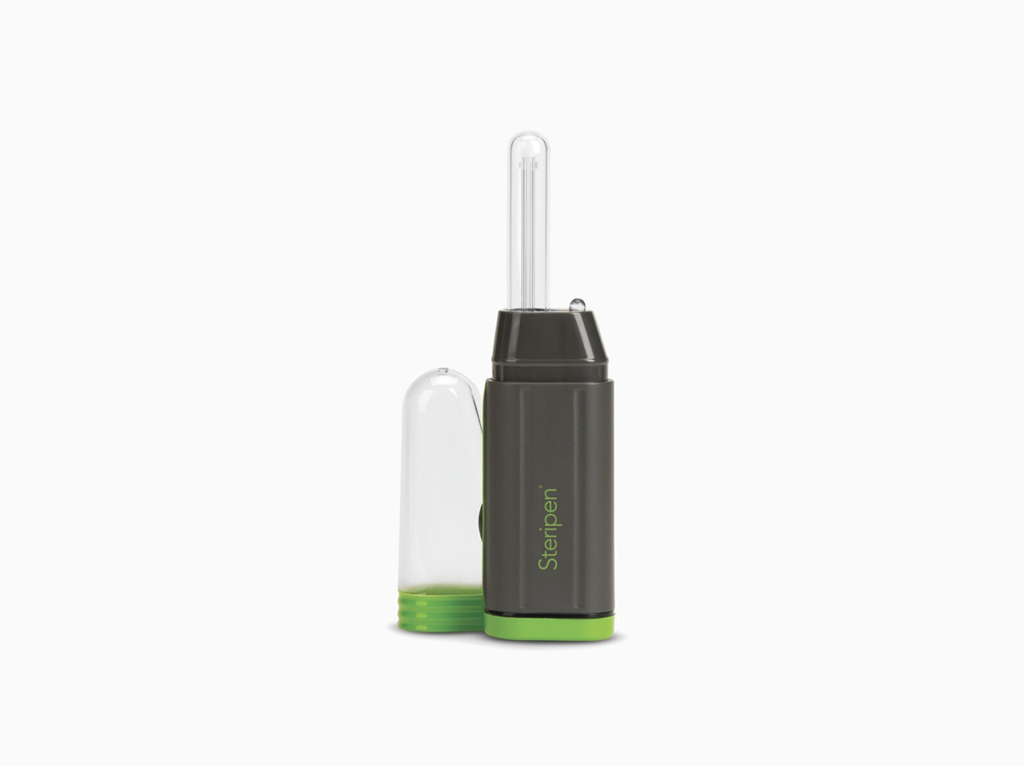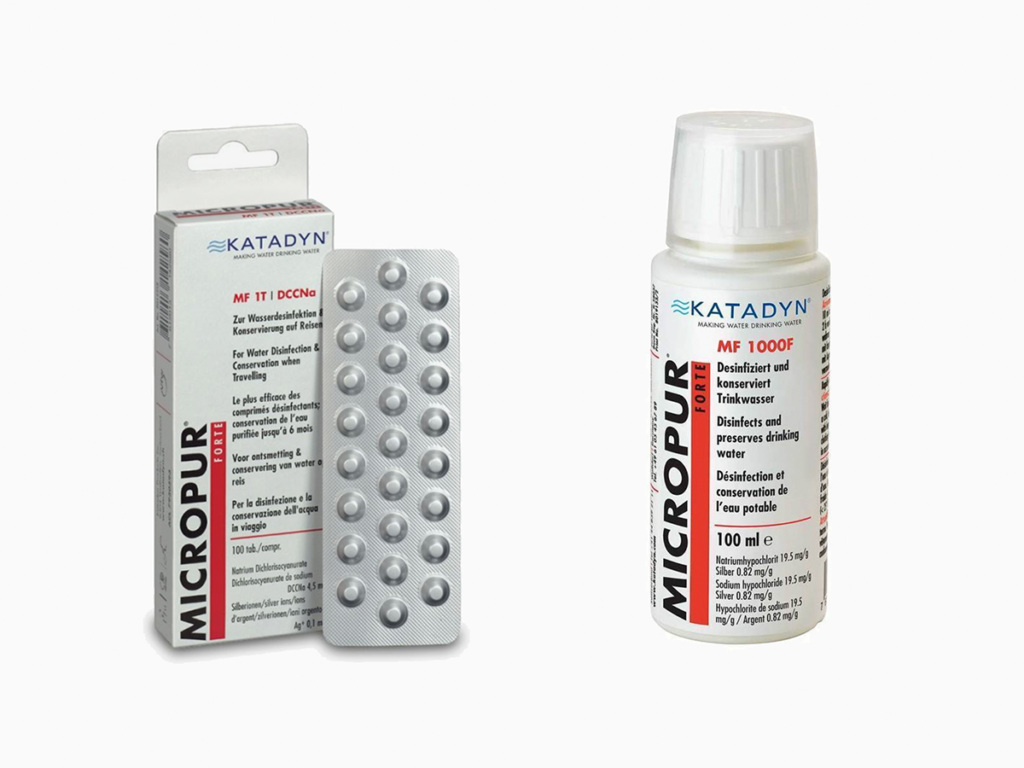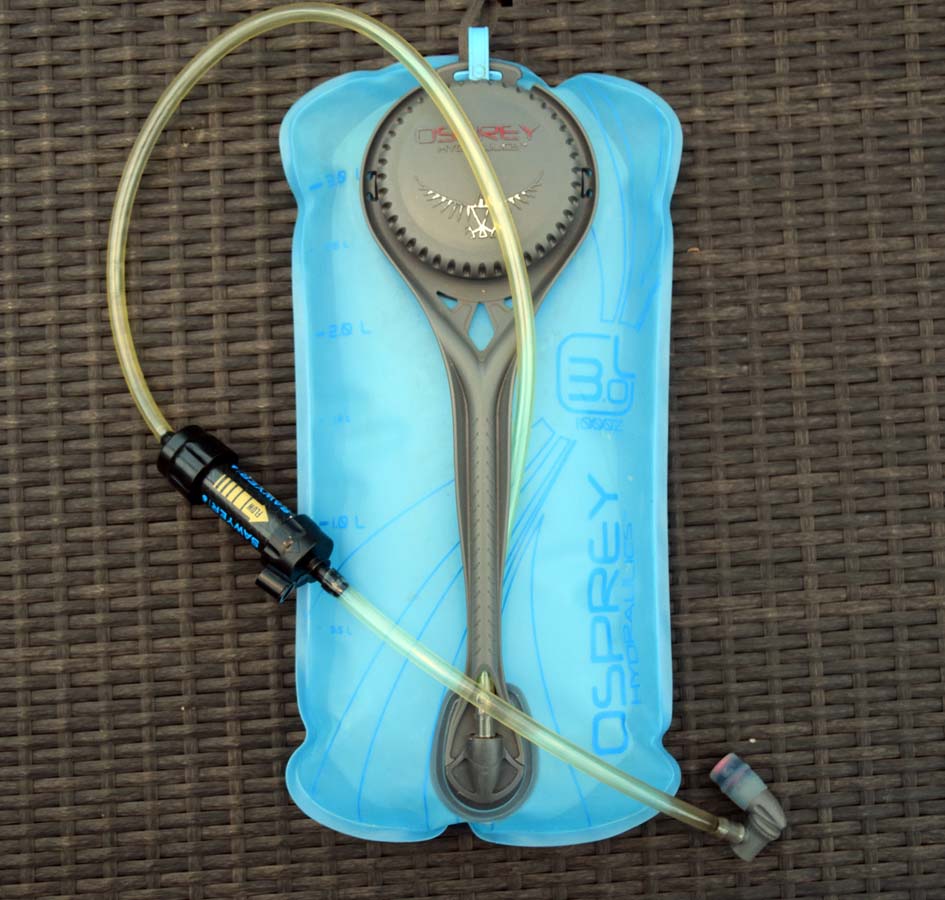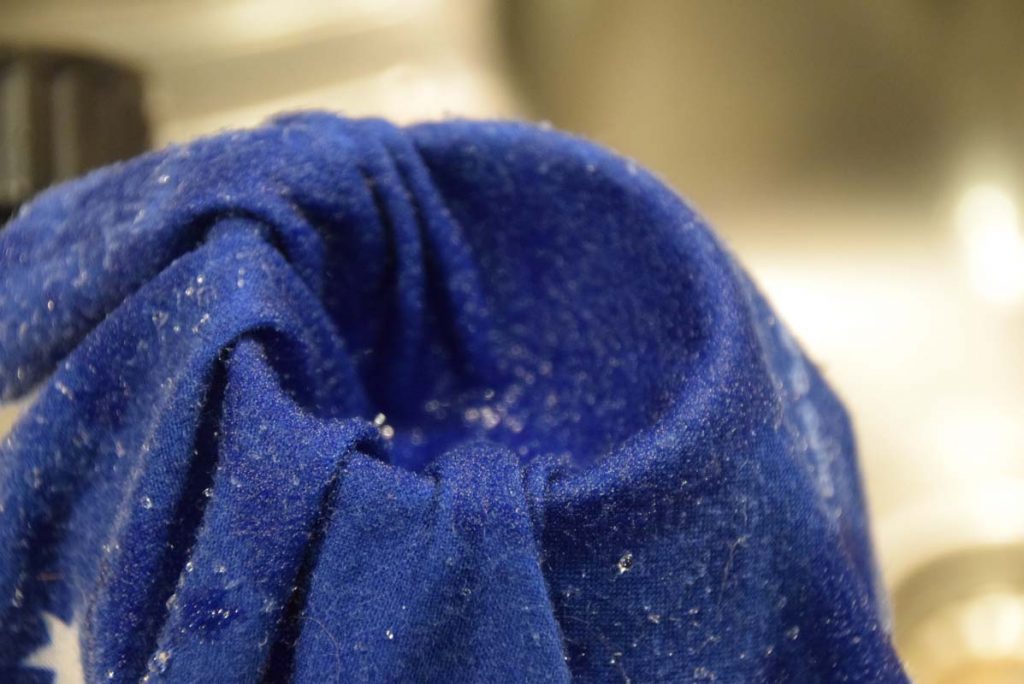Water and Hiking: Filtration
Hiking practice
We recently discussed carrying water on the trail in relation to how much water to carry and how to carry it, however this is only half of the equation. In many places we hike, at least in western countries, we take for granted we will have access to good quality supplies of clean water right? While the answer is usually yes this is not a guarantee and what we see is not necessarily all that we get.
While the water we are just about to drink may appear clean and clear what do we know about the upstream feeder sources? Are there farms or heavy industry? Has the local sewerage treatment plant upstream had problems that have resulted in a release of untreated effluent? What else is going into the water catchment system of the tank you are about to drink from?
I can remember camping as a child and one of the water tanks we regularly used had a possum fall into it and drown. After a few days it was very, very obvious from the smell that something was seriously wrong with the water but for the first day or so this dead decaying possum was slowly dissolving into the water supply without us being aware, and with it all sorts of germs that I don’t want to think about!
I travelled through India a few years ago and managed to pick up a case of Giardia that took me six weeks on a fairly strong course of antibiotics to get rid of; an experience that I never want to repeat. Don’t be fooled here, Giardia exists in Australia and there have even been outbreaks in town water sources. As a result of this I am extremely cautious when collecting water on the trail and no matter how clear the water may appear, I will always use some form of water treatment just to be on the safe side.

This image shows possum poo on the solids trap of a camp shelter. While the large solids don’t go into the water tank any bacteria or parasites end up in the water that you drink
Types of Water Filters
When we talk about filtration we are talking about some mechanism to remove/disable impurities through the use of a fine physical barrier, a chemical or biological process with the aim of getting the water to a specified water quality. The most common forms of water purification methods used for hiking fall into the following categories:
- UV Light – These devices purify water through an ultraviolet light which kills pathogens, including viruses e.g. SteriPEN
- Gravity Filters – These filters use gravity to force water though a filter e.g. Platypus Gravity Works
- Pumps – These filters clean water by pumping it through a fine filter that will trap most, but not all microbes e.g. MSR Guardian or MSR Trail Shot
- Chemical (liquid or tablets form) – Chemicals that kill living organisms in the water e.g. Katadyn Micorpur Forte Water Purification Tablets
- Straw Filters – These filters pass water through a filtration system that treats the water as you drink e.g. Sawyer Mini or Katadyn BeFree
With so many different options available is one better than the other? Which one should you use?
Each type of water filtration method has its advantages and disadvantages, and as such there really is no one perfect option for water filtration. You may even find that you use different kinds for different hikes. So lets have a look at the choices and see how they stack up.
UV Light
These purifiers excel at killing viruses along with other types of pathogens unlike most other choices on the market. They operate by ‘frying’ the viruses so they can’t reproduce.
The SteriPEN, which is really the only supplier in this category for hiking purposes has been around for a number of years and produces a number of different models. Most hikers who have been using these for a while will be familiar with battery operated models but there is now a rechargeable option as well.
Essentially you just dip the UV component of the pen into your water bottle (doesn’t work with bladders), wait until the warning light goes off, and hey presto, your water is treated. I must admit I tend to be a sceptic with my SteriPEN so will always double treat the water just out of paranoia (did I mention that I never want Giardia ever again?).
Advantages
- They kill all forms of pathogens including viruses
- The units are relatively lightweight and compact
- Works as a weak torch if you are really desperate
Disadvantages
- They don’t filter out solid contaminants so while the water will be healthy to drink it may not taste that great and can contain chunky bits
- These filters tend to be a single user unit
- They can be easily damaged if you are rough with them. If you look after them, there are no issues
- Works with water bottles only. If you use a water bladder then you will need to treat the water in a bottle then top up the bladder
- You run the risk of cross contamination if you are not careful (see below)
- Price. The rechargeable SteriPEN is around AUD $240 RRP. It does however treat viruses and if that is a consideration then it’s worth it
- If the batteries go flat or you break it then you’d better have a back up of some type
- The UV light is almost invisible in bright daylight so you have to take it on face value that it has worked
- The battery isn’t a common size so take spares if you are doing a long overseas trip
- Does work so well with really dirty water
Best uses
- Overseas travel where water quality is doubtful
- Good for single users or couples

SteriPen Adventurer Opti Water Purifier
Gravity Filters
There are a number of different gravity filters on the market produced by companies such as Platypus, Sawyer and MSR. As the name suggests, these filters work by gravity. They are simple to operate – just hang the ‘dirty’ water bag up high either in a tree or on a rock, or hold it up if there is no other choice and let gravity do all the work. The bags are clearly marked as ‘clean’ and dirty so that you don’t confuse which one is the mucky water.
The Platypus Gravity Works is one of the best known options available in this category and comes in either a two or four litre capacity. The two litre system will take just under two minutes to filter (depending on the water quality). This is a great unit that will work well for solo hikers, couples, as well as for larger groups.
Advantages
- Removes most pathogens
- Filters out the chunky bits
- Very easy to use
- Relatively quick with filtering larger volumes of water so great for large groups
Disadvantages
- Doesn’t kill viruses
- The dirty water bag can be difficult to seal shut, particularly with age
- Not cheap at around AUD $270 RRP
Best uses
- Great option for groups bigger than two but also equally good for solo hikers. I bought mine for use on a three person trip

Platypus Gravity Works 2 Litre in use

Platypus Gravity Works city bag. Fill this bag up and the water runs through the filter to clean
Pumps
These are the big boys, literally, of the water treatment world, and have been around for many years in one form or another. As named the filters physically pump water through a filtration system that will physically trap most waterborne nasties. They rely on your muscle action so you get a good workout at the same time as you filter your water.
These filters are great for larger groups but can be a bit of overkill otherwise. Enter the MSR TrailShot; this compact smaller version is a stripped back version of its bigger brothers and is great for the solo hiker.
Top of this range is the MSR Guardian Water Purifier which also filters viruses. This is probably the filter of choice when trekking through Asia or South America where viruses are likely to be present. Having said that is probably the dearest personal water filter on the market but given what it does, what value do you place on your health?
Advantages
- Removes most pathogens
- Filters out the chunky bits
- Easy to use
- Relatively quick with filtering larger volumes of water so heat for large groups
Disadvantages
- Most pumps don’t deal with viruses (the MSR Guardian Water Purifier is the exception)
- Takes a bit of physical effort to work
- Ranges from the relatively cheap (MSR Trail Shot at under AUD $110 RRP to ‘mortgage the house’ with the MSR Guardian Purifier at around AUD$699 RRP)
- On the heavy side. The MSR Trail Shot is relatively light but some of the heavier units are between 500-600 grams
- Good for natural water sources but not so great when getting water out of sealed tanks e.g. the Larapinta Trail
- Fiddly with lots of pieces to maintain and/or replace
Best uses
- Good for bigger groups
- If you are traveling internationally or to somewhere where the water is really dodgy and you think there are viruses, spend the money and get an MSR Guardian Water Purifier. Otherwise something like the MSR Trail Shot is a better option


MSR Guardian Water Purifier
Chemicals
Using chemicals to treat water is by far the lightest option for the ultralight hiker but as always there are drawbacks.
In this category you have choice of either tablets such as the Katadyn Micropur Forte or also from Katadyn, the Micopur Liquid Purifier. Other companies such as Aquamira are also well known but a bit harder to find. Both these options rely on treating water with a chemical agent. Again they don’t filter the chunky bits out of the water but they do provide drinkable water for up to a period of six months.
The tablets are the easiest to use; just add one tablet per litre and wait of 30 minutes before drinking (for viruses and bacteria) or two hours for Giardia. As an example if you drink 4 litres of water per day the packet of 100 tablets will last 25 days. For people like me paranoid about Giardia, this means I would operate with at least two bladders and drink from one while the other is being treated.
The liquid is a bit more fiddly requiring you to add 1 ml (1 drop) per 10 litres. I prefer the tablets because you don’t have to measure.
Advantages
- They kill all forms of pathogens including viruses
- The tablets/liquid are very lightweight and compact
- Relatively inexpensive under 40 cents per tablet. Over a number of years it can add up but you don’t think about it
- Very easy to use. All you need to do is count and add the required number of drops or tablets
Disadvantages
- They don’t filter out solid contaminants so while the water will be healthy to drink it may not taste that great or look ‘clean’
- If you are concerned about Giardia, its a two hour wait between drinks
- Do I really need to add chemicals to my drinking water?
- Taste. Some people seem to be very sensitive to the taste of these chemicals however we don’t seem to notice it
- Expensive in the long run
Best uses
- As a good back up to other options
- Good for the weight conscious ultralight hiker

Chemical water treatment in tablet and liquid form
Personal Filters
This is a bit of an odd category but ‘Personal Filters’ seemed to be the best label for the filters we haven’t yet discussed. This category includes the Lifestraw, the Katadyn BeFree and the Sawyer Mini Filter and while these can all be used to filter water for more than one person, most hikers who use these options have their own and they don’t share.
The Lifestraw is very much a personal ownership type of object and is designed to drink water directly from the source through what can only be described as a large thick straw. This option works well in areas where there is water everywhere and you can pretty much stop and drink as much as you like when you want. It was originally designed for third world use to provide safe drinking water. Its not so good for those hikes where you have no water for 20+ kilometres and you need to carry water with you unless you feel like drinking through the Lifestraw out of a hydration bladder which is just awkward.
The Katadyn BeFree is the next step on from the Lifestraw. You fill up a flexible 600 ml water bottle that comes with this unit and screw on the filtration unit as the cap. This option doesn’t involve you getting your face within a few inches of the water source like the Lifestraw but given it’s capacity, it also relies on frequent guaranteed sources of water. There are other brands that do similar things on the market but the flexible bag and the weight of this product makes for a great backup if you want one.
The next model to discuss here is the Sawyer Mini filter. The Sawyer is a very versatile unit and comes with a straw that allows you to use it in the same way as the Lifestraw. It also comes with a 500 ml flexible bag that you can squeeze water through either directly or into another water resivour such as a bottle or bladder. Care is needed here as the seal is not quite prefect so you want to ensure that any leakage doesn’t contaminate your clean water source or go straight into your mouth defeating the purpose of having a filter in the first place.
For me the Sawyer Mini is my current ultralight preference and I have mine inline with my water bladder which means that I top up my bladder and drink straight from the drinking tube. Putting this unit inline does make drawing water from the bladder a bit harder, particular when you have filled it first thing in the morning but it is very easy to use.
Advantages
- Cheap (all the options are well under $100 AUD)
- Filters out most pathogen (not viruses)
- Filters out the chunky bits
- Very easy to use
- Drink from your water source immediately, no waiting
Disadvantages
- Doesn’t kill viruses
- Care is needed to avoid cross contamination with some of these units
- Personal use only, not really for group uses
- The Lifestraw and Katedyn BeFree (and the Saywer Mini when drinking straight from the source) rely on having very regular water sources
- In practice you don’t tend to drink as much water with these units as its just plain fiddly. This can be an issue on very hot days
Best uses
- Good for individuals who want to travel light
- The Katadyn BeFree is a great back up option or for those who don’t like water bladders and know for sure that the trail is either short or the water is guaranteed

Katadyn BeFree filled and ready to go

A Sawyer Mini filtering into a cup. I’ve attached a 1 Litre flexible Platypus water bottle instead of the much smaller flexible bottle that comes with the Sawyer

A Sawyer Mini Filter as an inline filter on a hydration bladder. Using the filter inline does limit the flow but I still find it works very well. The main drawback here is getting water for cooking can be very slow
What else do I need to know?
- Pre filtering
- Depending on the quality of your water source you may need to filter out large chunky bits/sediment out of your water source prior to adding the water into your filtration system/water container otherwise you run the risk of clogging a mechanical filter or ending up with slightly solid water which won’t taste great even though it may be safe to drink. You can use pre-filters from most outdoor stores but I find that a good option is to use a buff and strain the water through this piece of versatile material to remove the solid particulates
- Cross contamination
- Its no use using a filtration system if you just end up pouring contaminated water into the clean water receptacle. Even water on the rim of bottles can be an issue when you are drinking straight from the container. Just remember to fill the container slowly, ensuring you don’t allow contaminated water to enter the clean water vessel. Wipe the thread if you need.
- Boiling Water
- Another option to make your water safe is to boil it. Bring your water to a rolling boil for at least one minute to kill pathogens. This works well at the end of the day but if you are drinking 8 litres per day you will be spending a lot of time getting your stove out to treat your water. At altitudes over 2000 metres, boil the water for three minutes.

Filtering with a Buff as a pre-filter
The Last Word
What all this amounts to is that there is no perfect solution for filtering water. The best option really depends on the situation and your own personal preferences. There is no wrong answer here but make sure you have put some thought into why you use what you use. Base your decisions on water quality (are there viruses?), types of water sources (natural or tank water), cost, weight, ease of use and last but not least the risks in drinking untreated water.
Our current preferences are as follows:
- Tim: Katdyn BeFree which I use to fill up hydration bladder, with Micropur tablets as an emergency back up
- Gill: hiking as a couple – Katdyn BeFree with Micropur tablets as an emergency back up
- Tim/Gill in a group of three or more – Platypus Gravity Works 2 Litre size